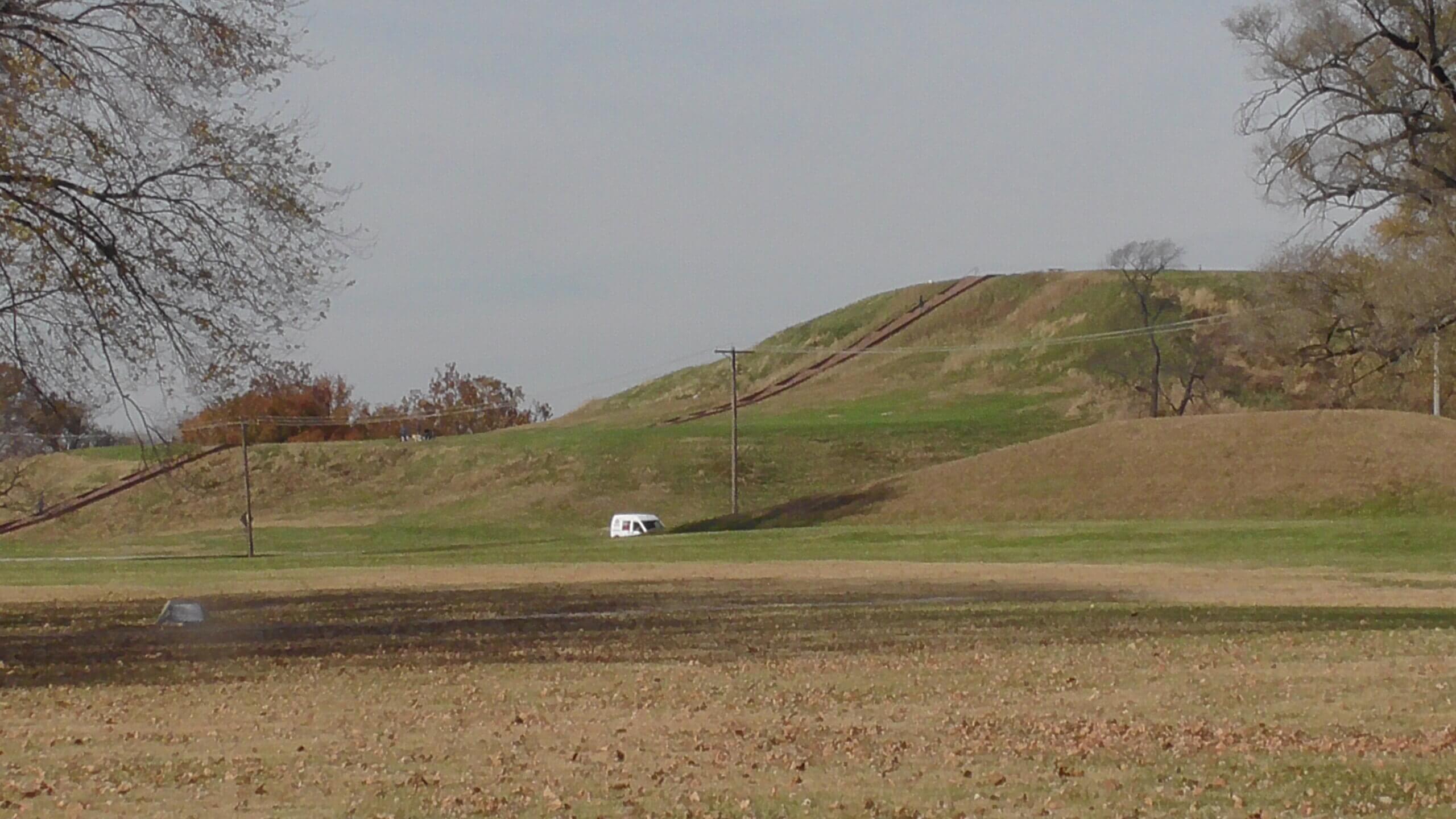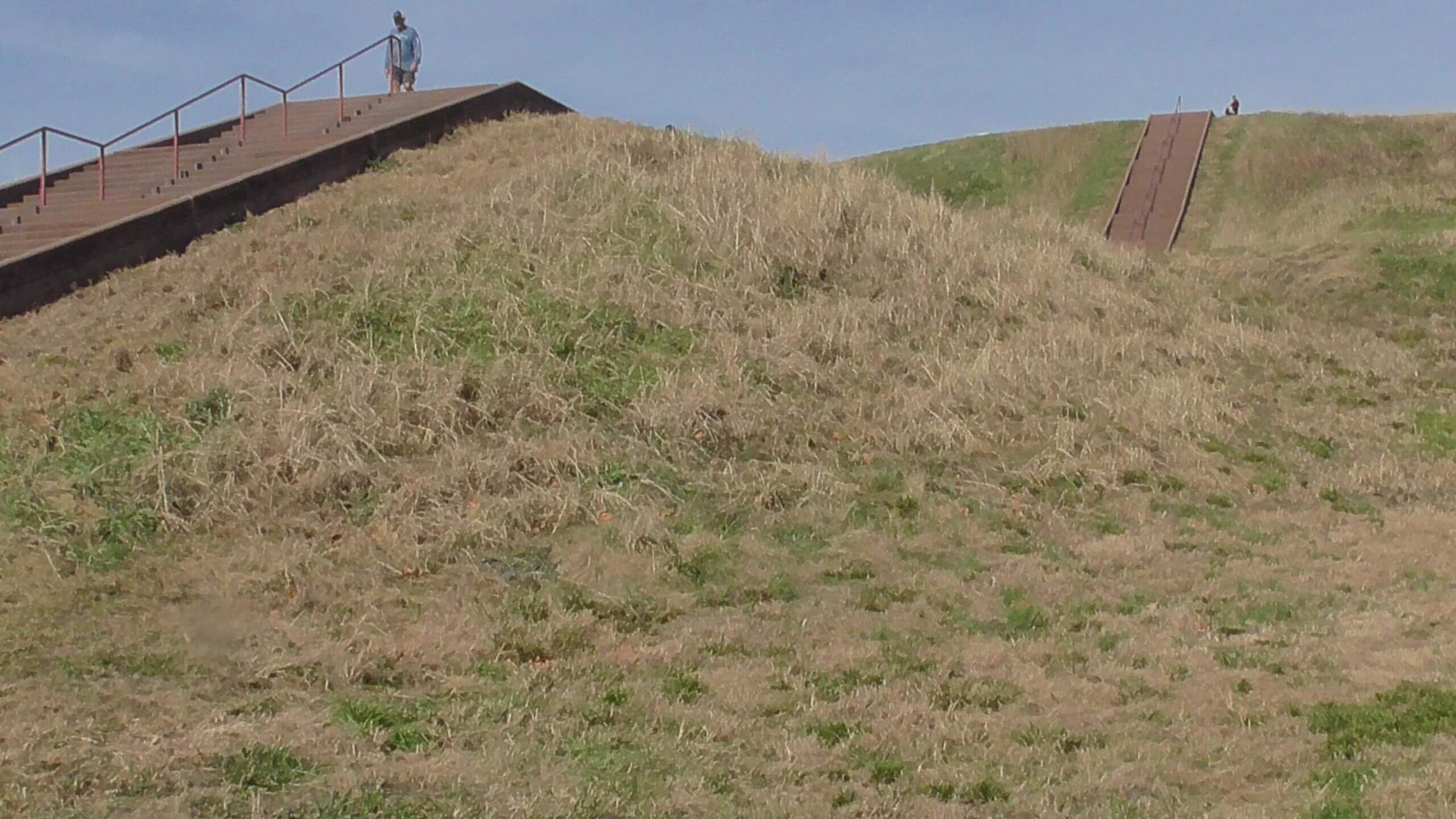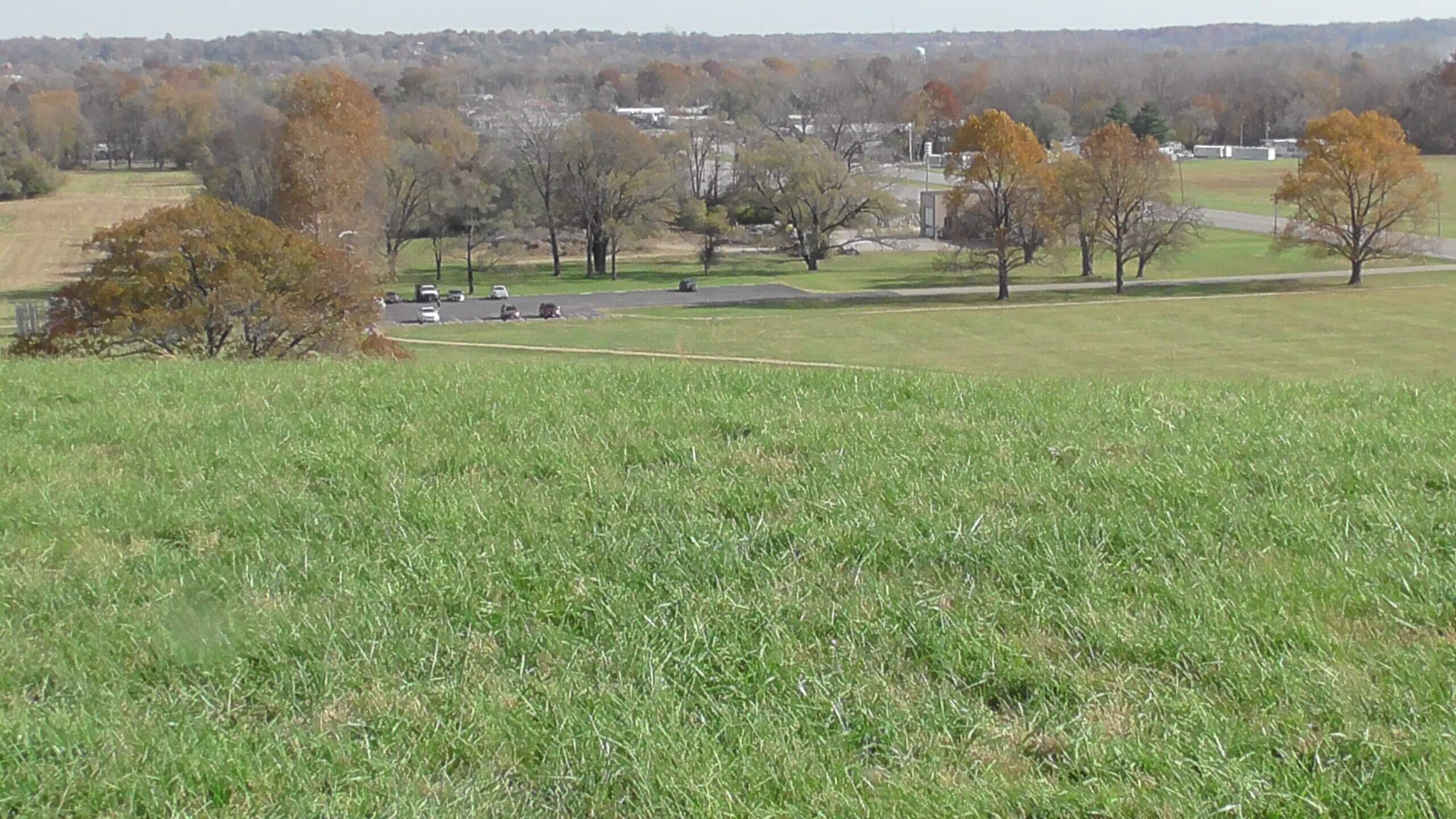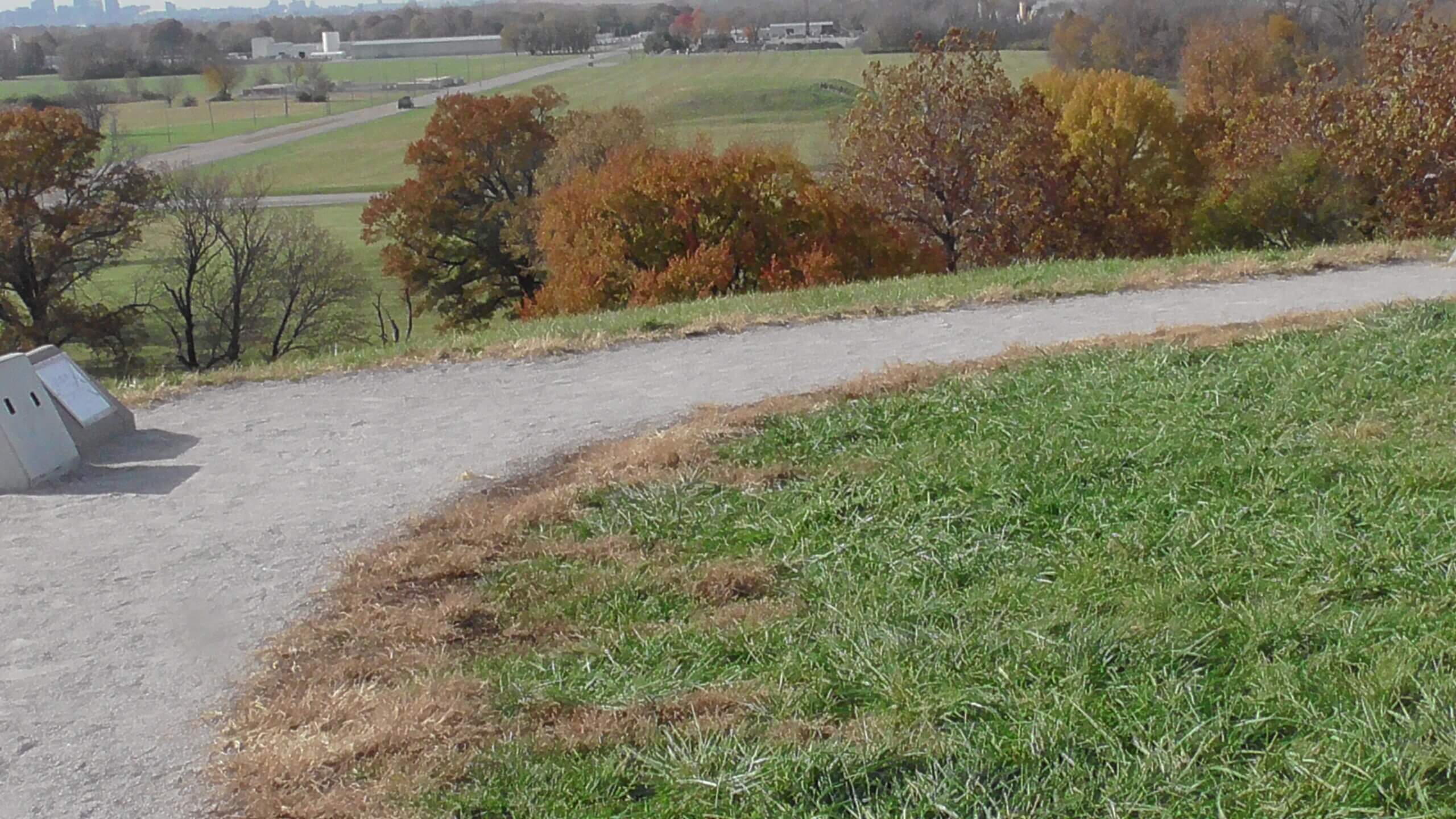Cahokia Mounds, Illinois
The Cahokia Mounds State Historic Site is the site of a pre-Columbian Native American city which existed around 1050–1350 CE about 6 miles east of contemporary St. Louis, Missouri. The park covers about 3.5 square miles, and contains about 80 mounds, but the ancient city was much larger. At its apex around 1100 CE, the city covered about 6 square miles and included about 120 man made earthen mounds in a wide range of sizes, shapes, and functions. At the height of its population, Cahokia may have briefly exceeded London at that time, which was around 14,000–18,000.
To build the mounds, thousands of workers over decades moved more than an estimated 55 million cubic feet of earth in woven baskets to create this network of mounds and community plazas. Monks Mound, for example, covers 14 acres, rises 100 ft, contains about 814,000 cubic yards of dirt, and was topped by a massive 5,000 sq ft building another 50 ft high.
Cahokia was the largest and most influential urban settlement of the Mississippian culture, which developed advanced societies across much of what is now the central and southeastern United States, beginning more than 1,000 years before European contact. Today, the Cahokia Mounds are considered to be the largest and most complex archaeological site north of the great pre-Columbian cities in Mexico.




